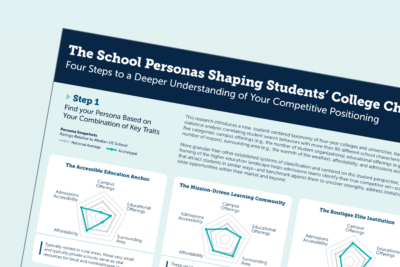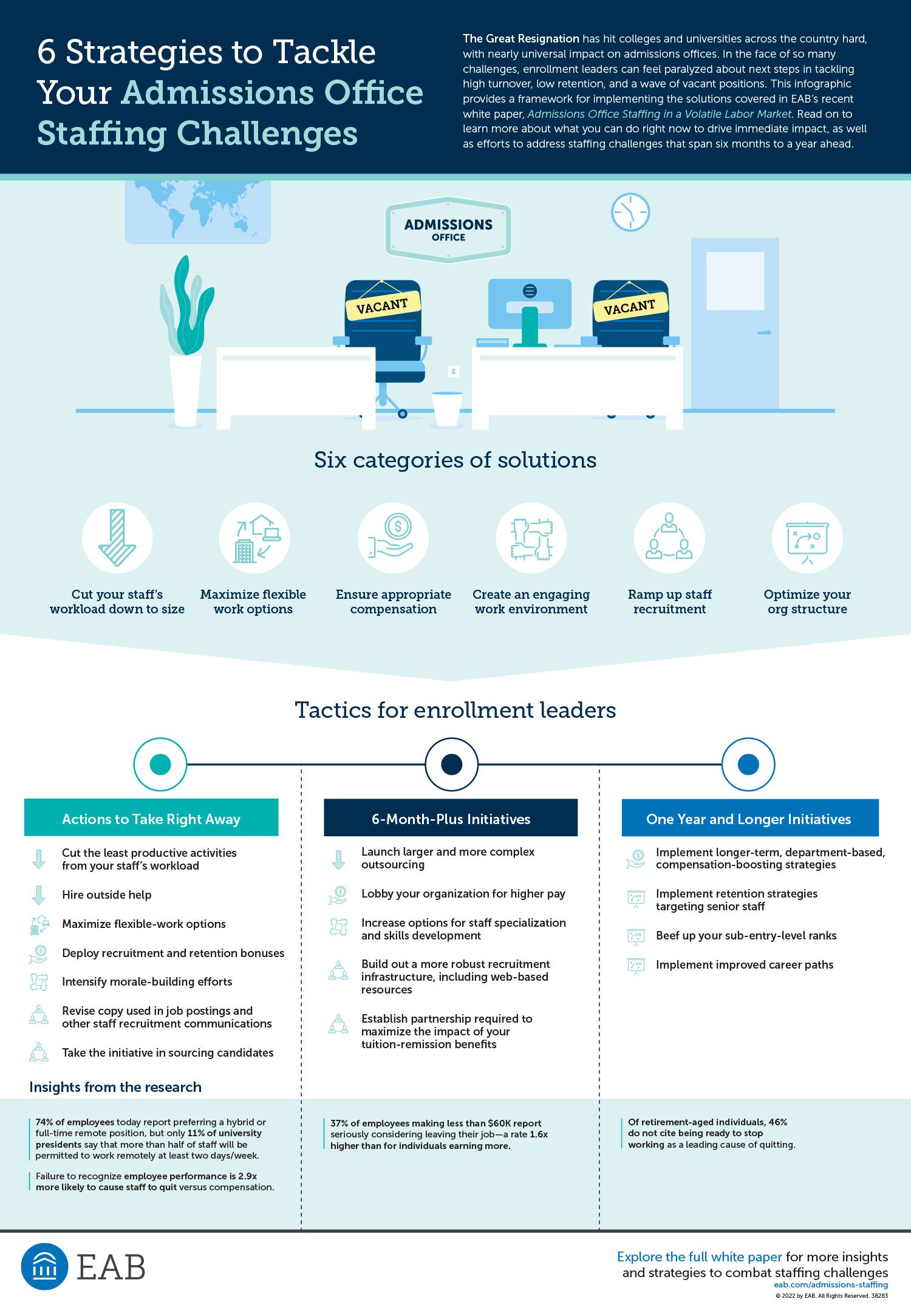Infographic
6 strategies to tackle your admissions office staffing challenges
The Great Resignation has hit colleges and universities across the country hard, with nearly universal impact on admissions offices. In the face of so many challenges, enrollment leaders can feel paralyzed about next steps in tackling high turnover, low retention, and a wave of vacant positions. This infographic provides a framework for implementing the solutions covered in EAB’s recent white paper, Admissions Office Staffing in a Volatile Labor Market. Read on or download the PDF to learn more about what you can do right now to drive immediate impact, as well as efforts to address staffing challenges that span six months to a year ahead.
Tactics for enrollment leaders
Actions to take right away
- Cut the least productive activities from your staff’s workload
- Hire outside help
- Maximize flexible-work options
- Deploy recruitment and retention bonuses
- Intensify morale-building efforts
- Revise copy used in job postings and other staff recruitment communications
- Take the initiative in sourcing candidates
Insights from the research
- 74% of employees today report preferring a hybrid or full-time remote position.
- But only 11% of university presidents say that more than half of staff will be permitted to work remotely at least two days/week.
- Failure to recognize employee performance is 2.9x more likely to cause staff to quit versus compensation.
6-month-plus initiatives
- Launch larger and more complex outsourcing partnerships
- Lobby your organization for higher pay
- Increase options for staff specialization and skills development
- Build out a more robust recruitment infrastructure, including web-based resources
- Establish partnership required to maximize the impact of your tuition-remission benefits
Insights from the research
- 37% of employees making less than $60K report seriously considering leaving their job—a rate 1.6x higher than for individuals earning more.
- Opportunities for lateral career moves predict staff retention 12x more than promotion and 2.5x more than compensation.
One year and longer initiatives
- Implement longer-term, department-based, compensation-boosting strategies
- Implement retention strategies targeting senior staff
- Beef up your sub-entry-level ranks
- Implement improved career paths
Insights from the research
- Of retirement-aged individuals, 46% do not cite being ready to stop working as a leading cause of quitting.
More Resources

Insight Paper
College Search Trends Across Space and Time: 2025 Edition
Discover 2025 college search trends—early inquiries, wider reach, and enrollment shifts shaping student recruitment strategies.
Enroll360

Insight Paper
Enrollment-Optimized College Website 2.0:
This refreshed guide will help you evaluate the most enrollment-critical elements of your .edu website—from content and SEO…
Digital Agency

Infographic
The school personas shaping students’ college choices
This research introduces a new, student-centered taxonomy of four-year colleges and universities, based on a statistical analysis correlating…
Enroll360
